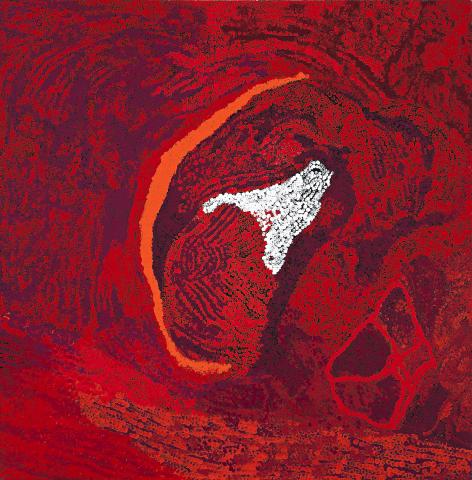PUKARA, 2011
TOMMY WATSON
synthetic polymer paint on linen
183.0 x 185.0 cm
bears inscription on Agathon Gallery label verso: artist's name and title Pilkarli [sic]
Agathon Gallery, Melbourne
Private collection, Melbourne
Tommy Watson, like many indigenous people born in the early twentieth century, lived a traditional nomadic life until his teenage years. He travelled thousands of miles on foot between waterholes, hunting large birds and animals with his family. Through this nomadic lifestyle he developed a profound knowledge and connection to the land and a high respect for following the traditional laws of his country. Watson projects his deep knowledge of the lands in vibrant, abstracted form onto canvas. 'His paintings resonate with the authority of his intimate knowledge of place.’1
The significance of Watson’s work is the strong visual language and bright colours used in his paintings as an ode to the desert homelands. In Pukara, 2011 thick shimmering layers of vibrant red, burgundy, orange, purple and white are applied by the artist in an almost meditative process that involves rhythmic dotting. The blocks of colour represent the landscape and the stories embedded in his country.
In the overview of Watson’s work, written in 2010 by Ken McGregor and Marie Geissler, they note that watching Watson paint is like ‘watching an intense rhythmic performance where the artist enters an almost trance-like state as he dots and periodically bursting into chant or song that relates to his ancestral ‘Dreaming’.2
1. McGregor, K., and Geissler, M., Yannima Pikarli Tommy Watson, Melbourne, 2010, p. 11
2. ibid.
